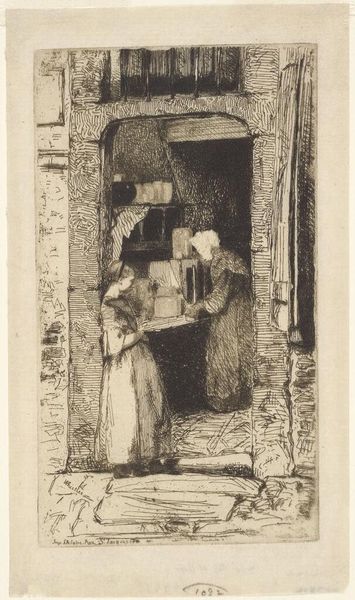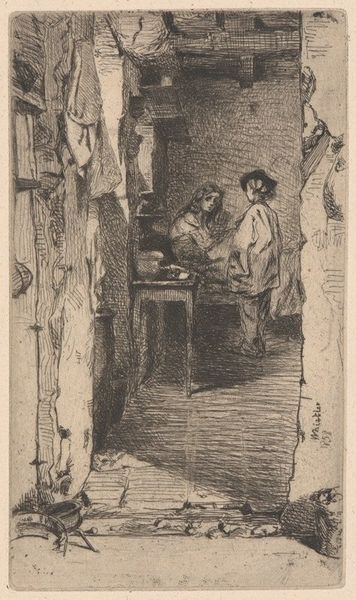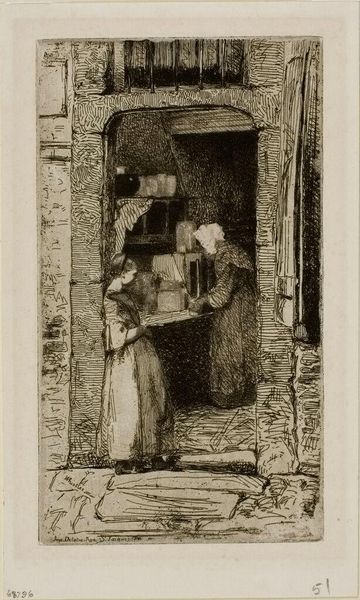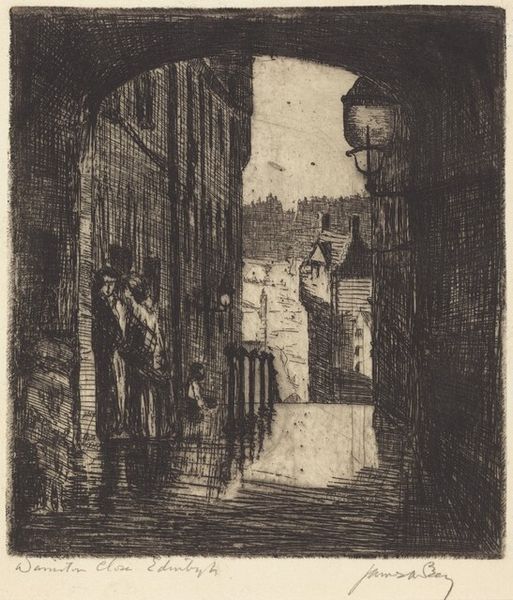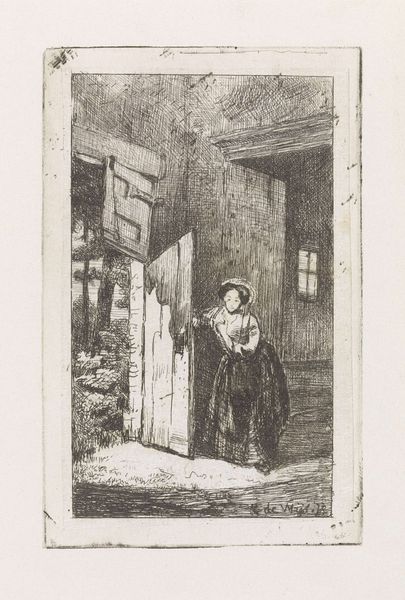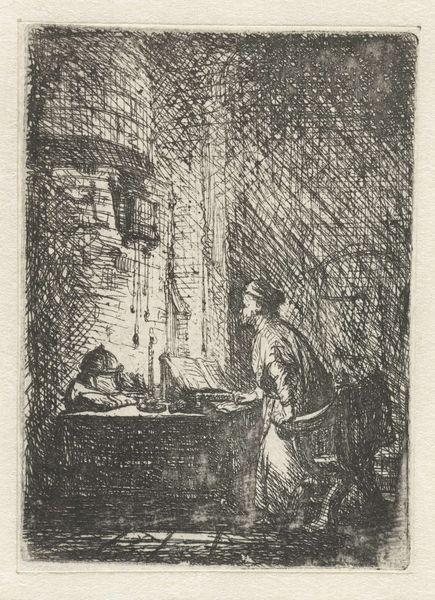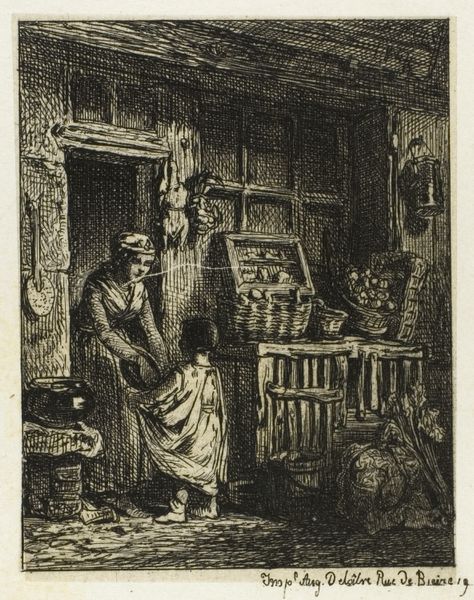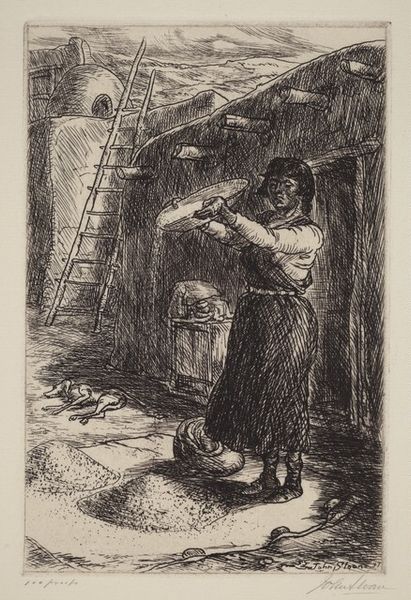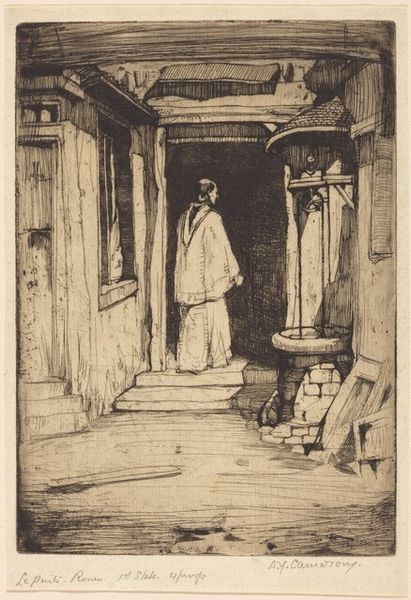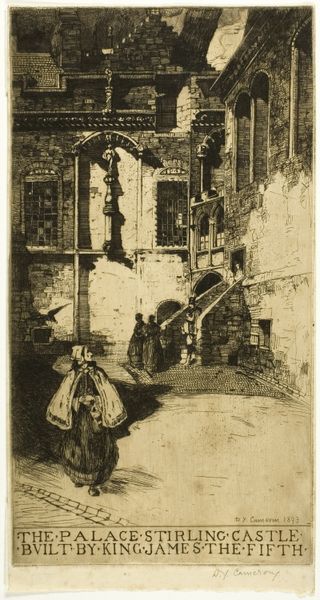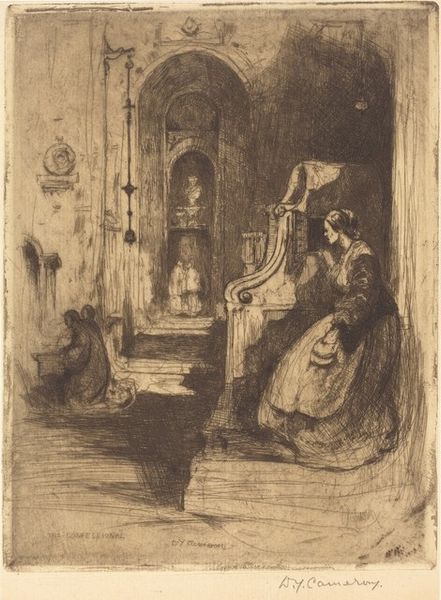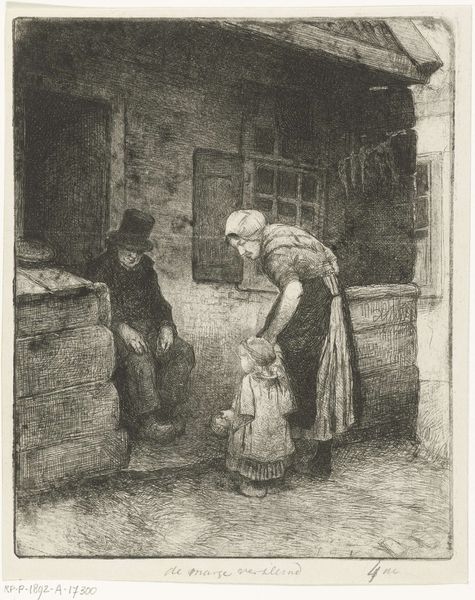
drawing, print, etching
#
portrait
#
drawing
# print
#
pen sketch
#
etching
#
genre-painting
#
realism
Copyright: Public Domain: Artvee
Editor: This is James Abbott McNeill Whistler's etching, "The Mustard Vendor," from around 1856. It feels like a glimpse into a forgotten world, a very specific moment in the lives of these women. How do you interpret this work, given its apparent simplicity? Curator: It’s fascinating how Whistler captures the everyday. The print gives the impression of a neutral observation. I am prompted to ask "neutral" for whom? It invites a closer look at labor, gender, and commerce in the mid-19th century. What does it mean to see women depicted in this transactional space? What kind of lives might they lead? And how might this intimate image reflect, reinforce, or perhaps even challenge social norms of that period? Editor: So, you see more than just a simple transaction here. The setting itself – the rough stonework, the dimly lit interior – seems significant too. Curator: Exactly. It is in understanding those structures that the humanity and struggles of individuals operating inside those structures can truly resonate. I think it highlights the vendor's resilience and the vital role women played in local economies, which were generally ignored and certainly underappreciated in official historical narratives. Editor: I didn't think about it like that initially. The textures seemed to dominate. Curator: The texture certainly adds character. But to understand that character we must contextualize its visual and tactile qualities and relate them back to lived experience of labor. Etchings like this gave rise to genre painting in which a celebration of daily life occurred that we need to consider critically. Who does celebrating that lifestyle benefit? And at whose expense? Editor: I guess looking at it that way, it opens up a whole new perspective on what Whistler might have been trying to say or what the artwork communicates regardless. Curator: Precisely. And remembering that art speaks within the constraints and potentials of its era keeps us critically awake. Editor: That’s incredibly helpful; thank you. It really highlights the value of connecting historical context with visual analysis. Curator: It is how we make visible art's role in our continuous and critical assessment of lived realities.
Comments
No comments
Be the first to comment and join the conversation on the ultimate creative platform.
